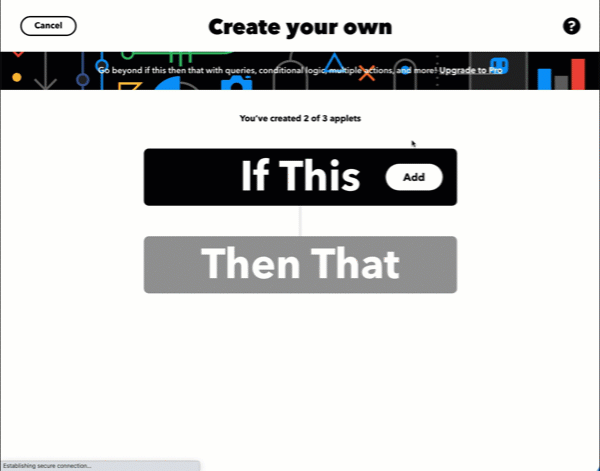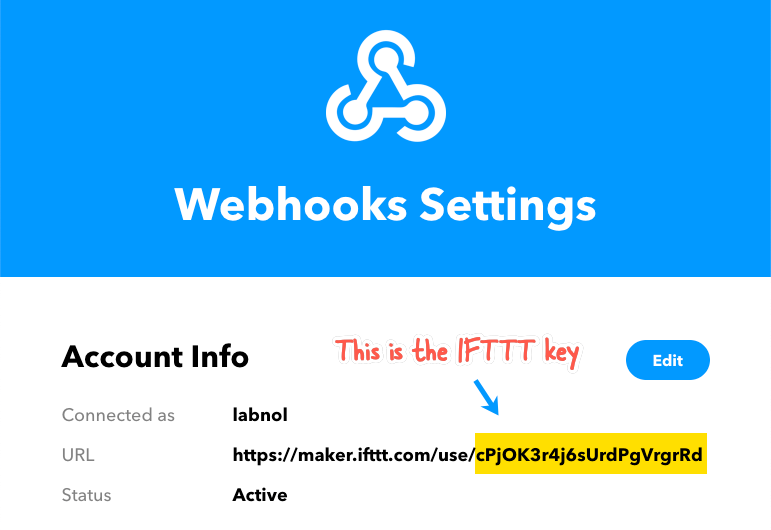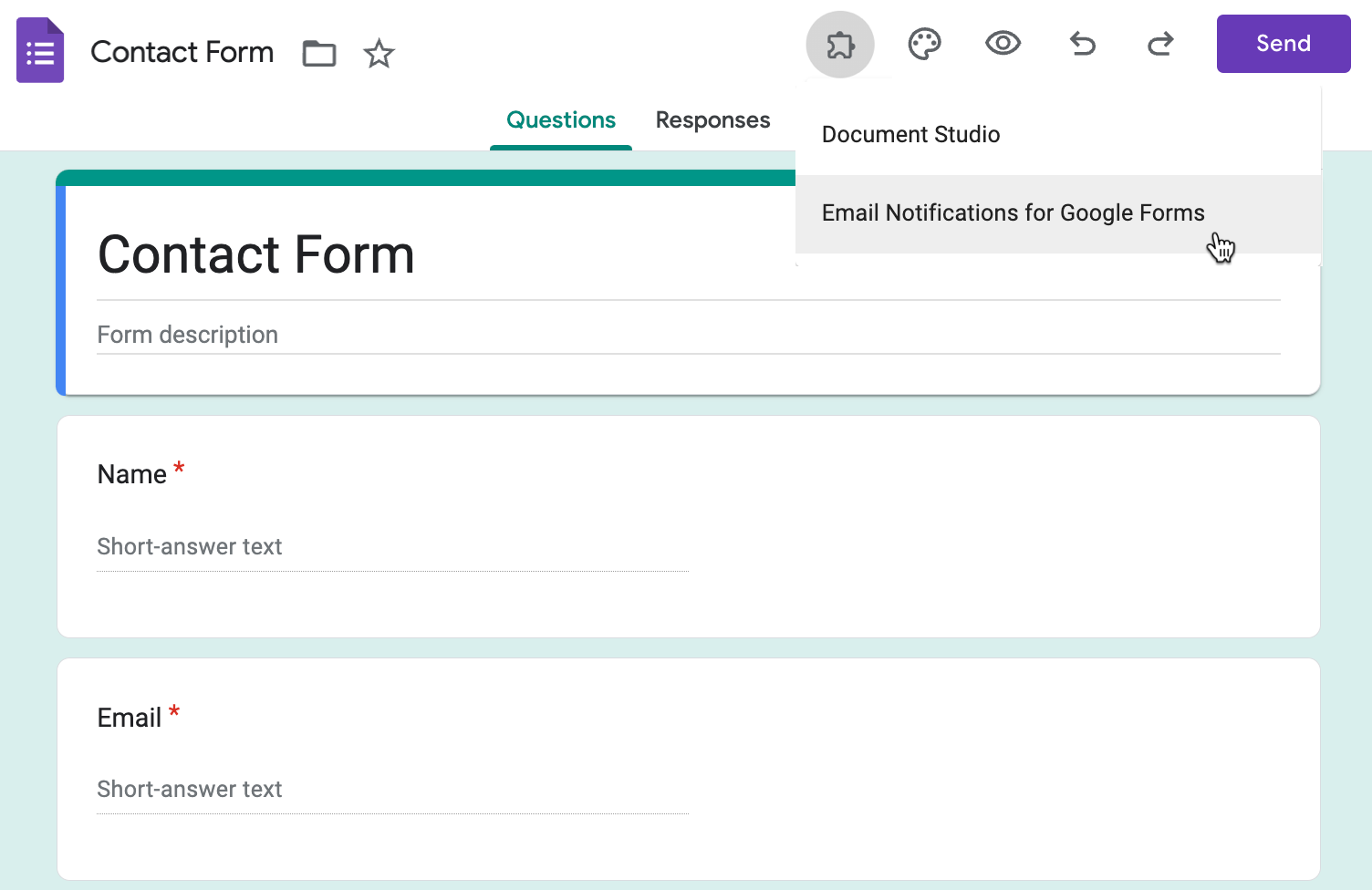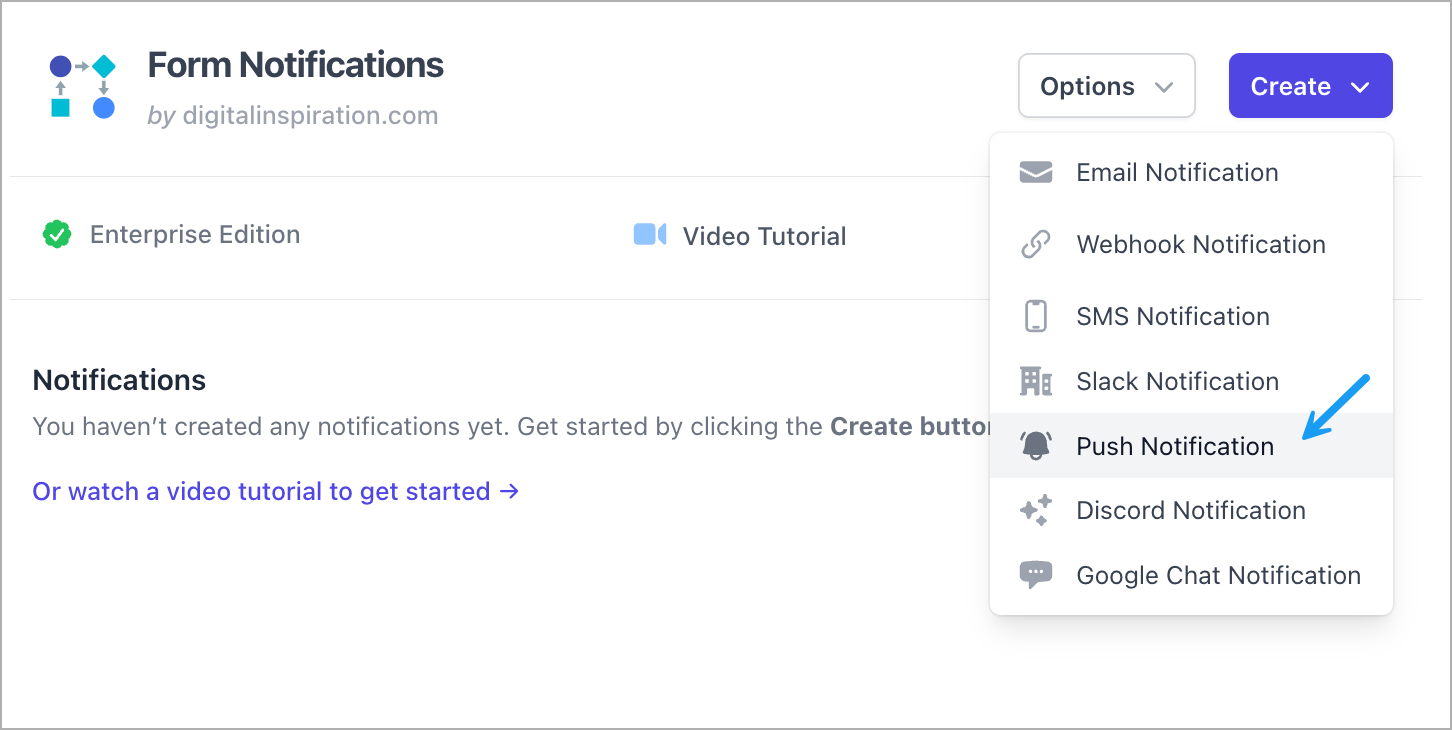How to Receive Push Notifications for Google Forms on iPhone and Android Phone
The Google Form Notifications add-on sends the form data in an email message each time a respondent submits your Google Form. It can also send confirmation emails to the form respondent confirming that their response has been received.
In addition to sending emails, the Google Forms add-on can be easily configured to send push notifications to your mobile phones and tablets as well. That means when respondents submit the Google Form, you’ll instantly get a real-time notification on your iPhone or Android phone.
Send Push Notifications with Google Forms
The rich push notifications send to your mobile phone can include answers from the Google Form as well as a link to the submitted form. You can tap the notification and view the complete form response on your mobile phone.
A fast response time is a key to success, especially in areas like customer service and closing sales leads, and mobile push notifications will ensure that your important form entries are never lost in the daily deluge of emails.
Set up Mobile Notifications for Google Forms
After you have installed the Google Forms add-on, download the IFTTT mobile app for Android from the Google Play Store or your iPhone from the App Store. When a new form entry is received, a push notification would be delivered to your mobile phone via the IFTTT app.
Connect IFTTT to Google Form
Next, we need to create a connection between the Google Form and the IFTTT app so that mobile notifications are triggered on the mobile phone immediately after the form is submitted.

- Open ifttt.com on your desktop and create a new applet.
- Click the
Addbutton forIf thiscondition and choose theWebhooksservice. - Choose the
Request a web requesttrigger and set theEvent Nameas name of your Google Form. - For the
if this then thataction, click theAddbutton and choose theNotificationsservice. - Select the “Send a rich notification from the IFTTT app” action.
- Select the
Add Ingredientbutton for the Title field and choose{{Value 1}}. Similarly choose{{Value 2}}for Message and{{Value 3}}for the Link URL.
Click the “Create Action” button and then press “Finish” (this is important) to activate your IFTTT applet.
If you do not wish the notification to open the Google Form response, leave the Link URL field blank while configuring the notification service.
Get your IFTTT applet key

Open Webhooks Settings and make a note of your secret IFTTT applet key. The key is the entire string in the IFTTT URL that is after the /use/ path.
Create Push Notification
Open your Google Form, launch the Notifications add-on. Here we have created a Google Form accepting registrations for an event. We will receive a push notification on our phone as soon as new registration is received.
Once you have launched the add-on, select Push Notification from the Create dropdown.
Enter the Event name (same as your form name), the IFTTT key, and the push notification text. You can put any {{form field}} in the text and these will be replaced with actual values filled by the user in the mobile notification.
Click the Test button to test the connection between the form and your mobile phone. If it works, click Save to enable mobile notifications.


Give this workflow a descriptive name. Enter the Event name (same as your form name), the IFTTT key, and the push notification text. You can put any {{form field}} in the text and these will be replaced with actual values filled by the user in the mobile notification.

If you have multiple Google Forms, you need to create separate IFTTT applets for each form and the event name should be unique for each applet.
Troubleshooting Mobile Notifications
- Ensure that your mobile is connected to the Internet.
- The event name in the applet should match the event name in the form configuration.
- You are logged into the IFTTT app on your mobile phone.
- Check the IFTTT log to ensure that notifications are getting sent.
Webhooks in IFTTT were earlier known as Maker.